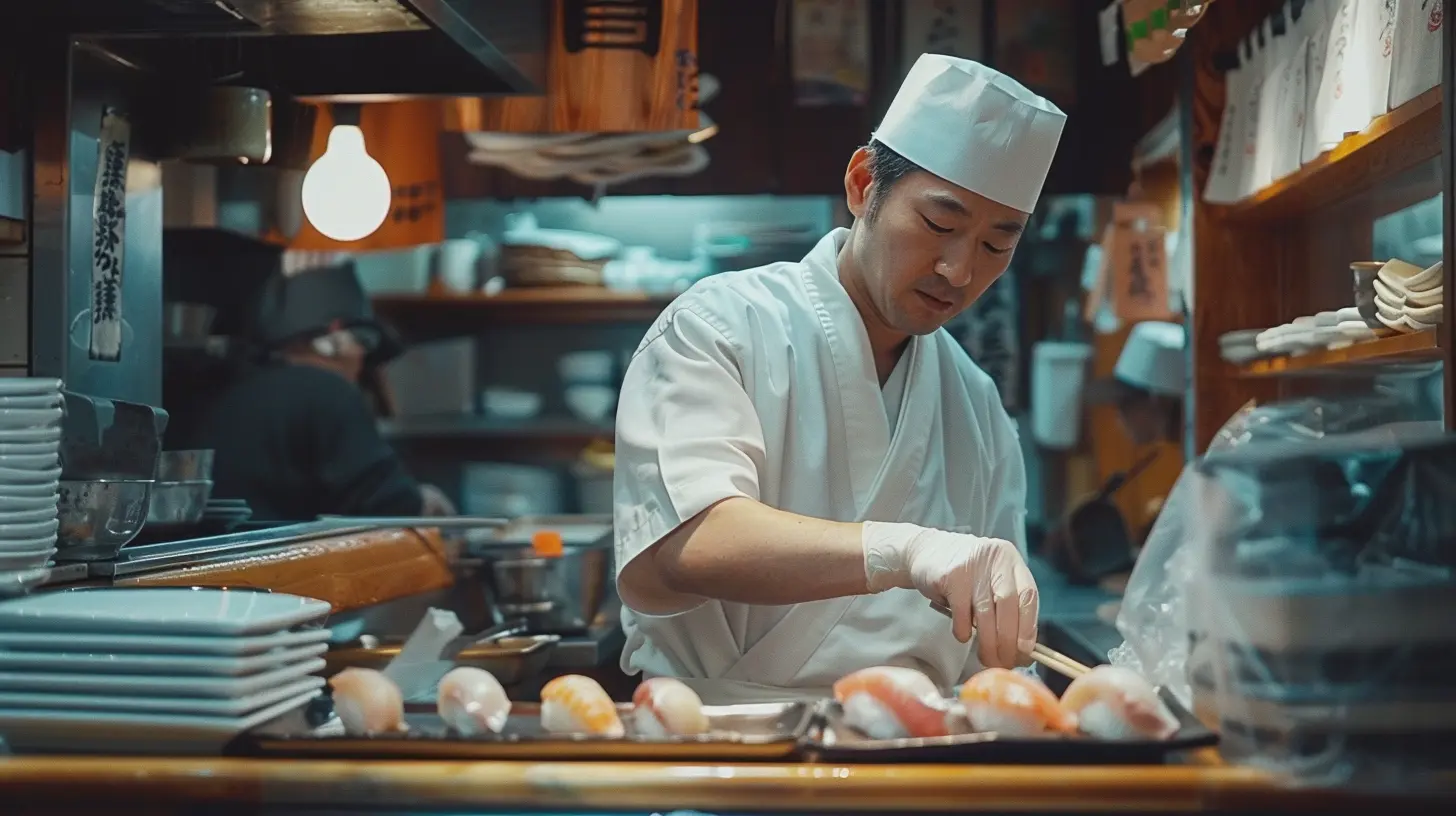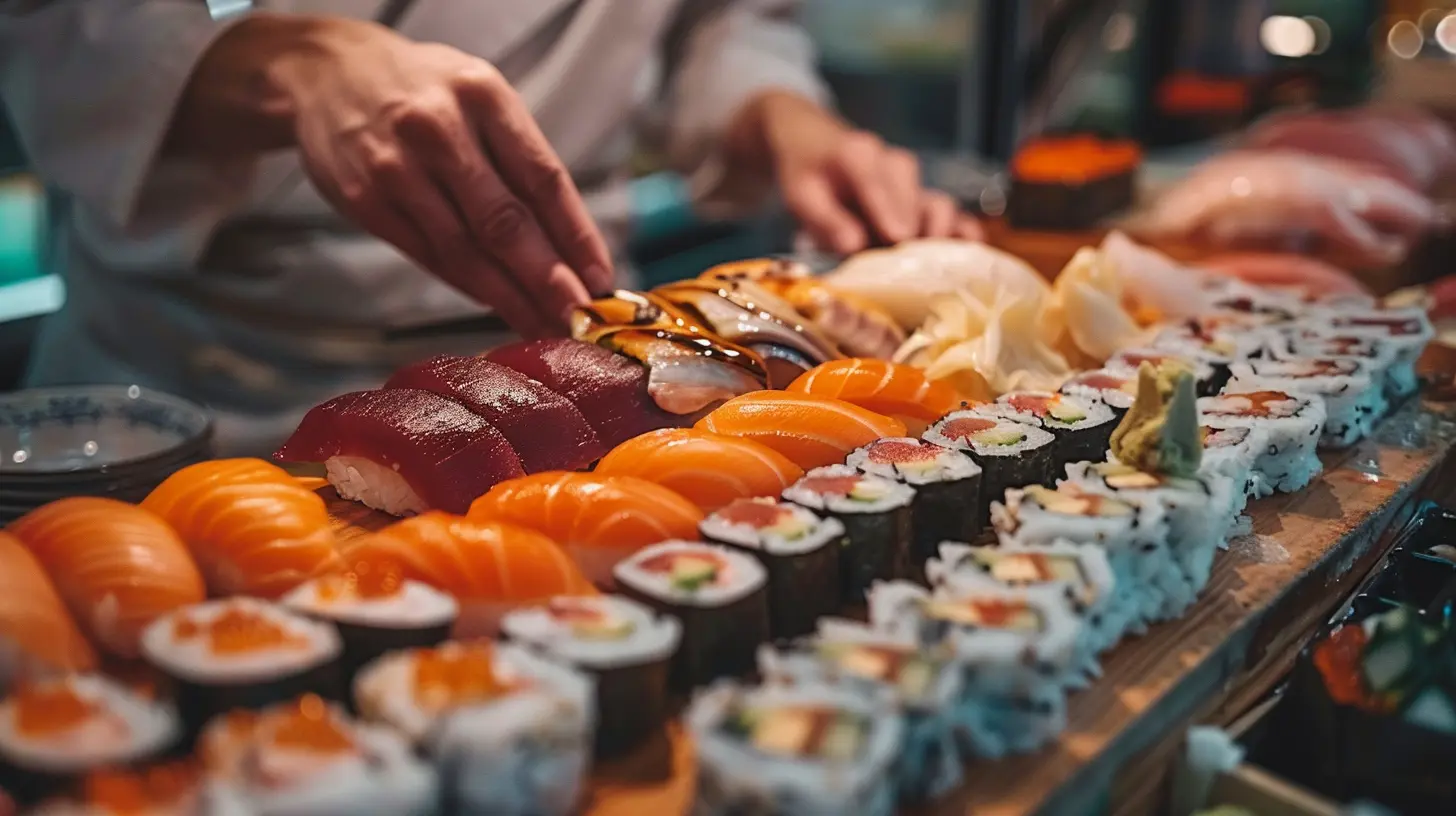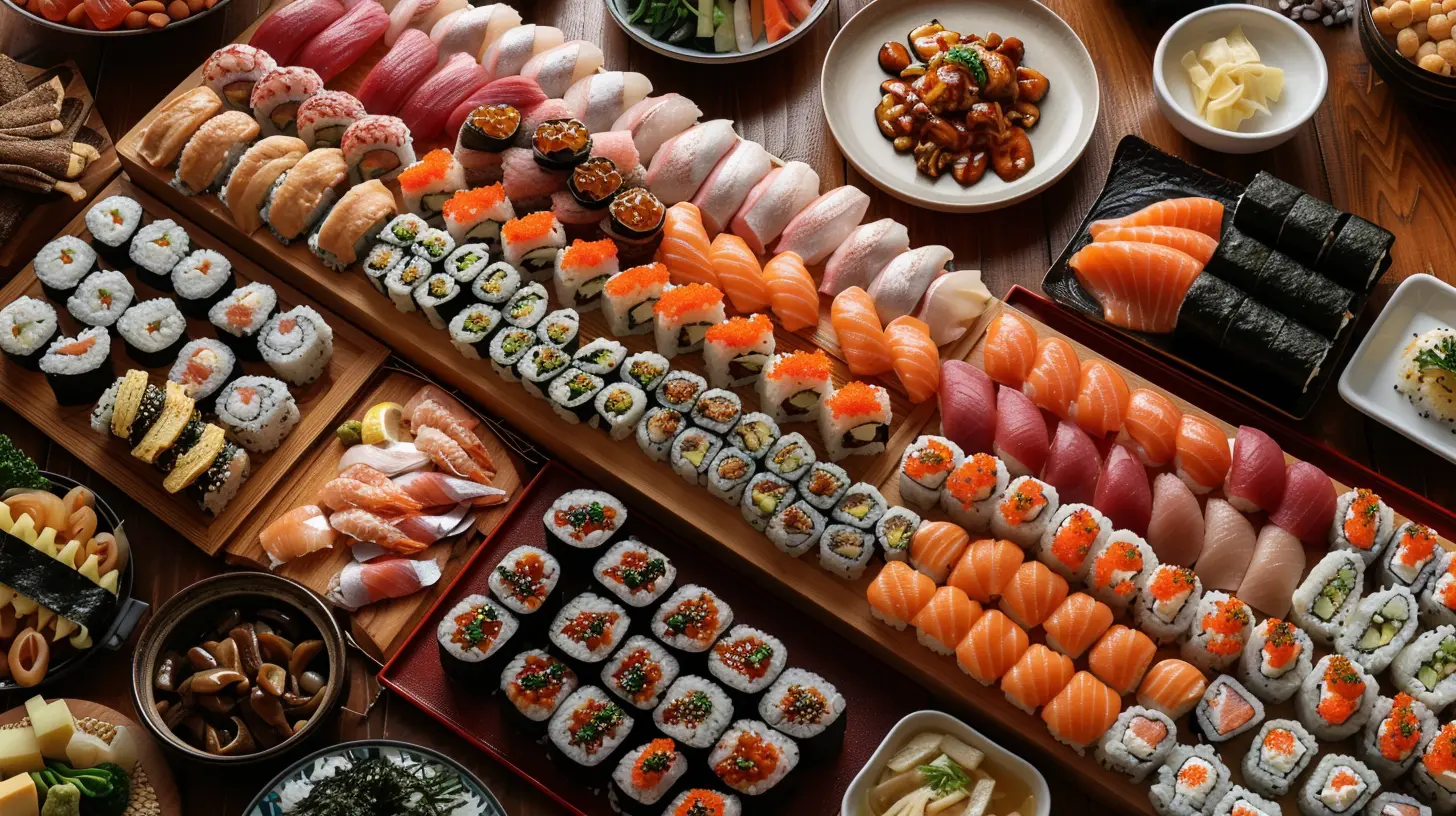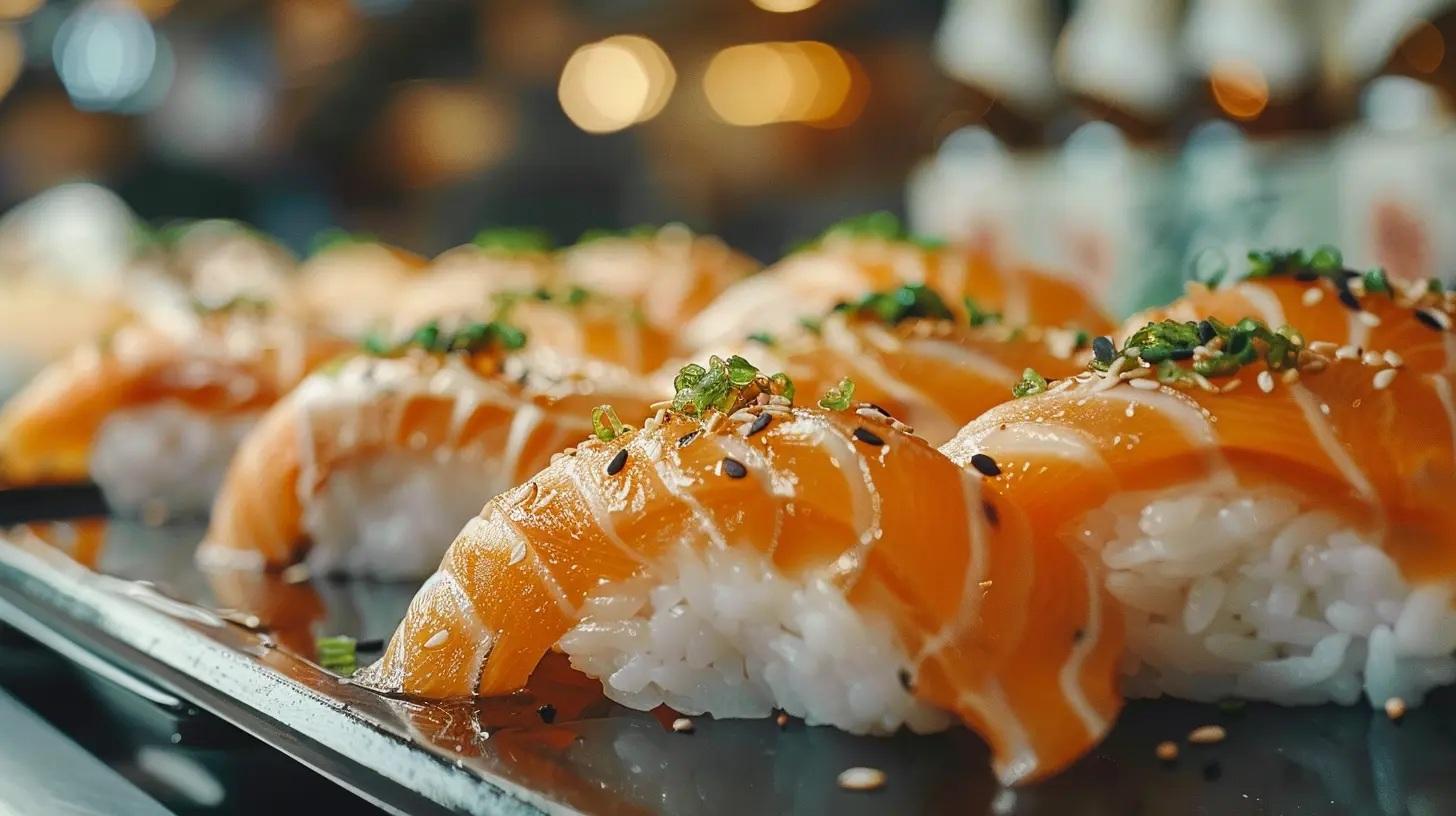Discovering Authentic Sushi Culture in Japan
24 August 2025
When you think of Japan, what's the first thing that comes to mind? For many, it's sushi. This iconic dish is more than just a global food craze; it’s an essential part of Japan’s cultural identity. But, did you know that sushi is much more than just raw fish on rice? It’s a centuries-old culinary tradition rich in history, technique, and a deep respect for ingredients. Whether you're a seasoned sushi lover or simply curious about this fascinating cuisine, we're about to dive into the heart of Japan’s authentic sushi culture.

A Glimpse Into the Origins of Sushi
Before we delve into the current sushi scene, let's take a quick step back in time. The origins of sushi are not as recent as many think. In fact, it began more than a thousand years ago, though not in the form we recognize today.What’s the story? Sushi initially developed as a method of preserving fish. In ancient Japan, people would ferment fish with rice to keep it edible for extended periods. This fermented fish, known as narezushi, might not be the sushi you'd crave nowadays — but it laid the foundation for what was to come.
By the Edo period (17th to 19th century), modern sushi, edomae-zushi, emerged. This sushi was prepared using raw fish served atop vinegared rice, which is closer to the sushi we enjoy today. It was initially sold as fast food from street carts, akin to modern food trucks. Who knew sushi was once a convenient, on-the-go snack?

The Role of Tradition in Sushi-Making
The Art of Simplicity
First off, let’s clear up a common misconception: making good sushi is not just about having access to fresh fish. It’s an art form, where chefs spend decades perfecting their skills. It’s truly a case where mastery over simplicity reigns supreme. Skilled sushi chefs, or itamae, approach their craft with a combination of precision, creativity, and respect for the ingredients.Ever wondered why sushi chefs often seem so particular? That’s not just for show. Every detail, from the type of rice to the exact temperature of the fish, is carefully considered to create the ideal bite.
Time and Patience
Becoming a sushi chef in Japan isn't as simple as signing up for a cooking class. The training path is long and rigorous. An apprentice chef may spend years learning how to properly cook the rice before even being allowed to touch the fish. Think about that — years just focusing on rice! Why? Because rice holds the sushi together and balances the flavors, making it just as important as the fish.The traditional sushi-making process is painstakingly precise. Something as simple as slicing fish can take years to master. A chef in training learns to slice at the perfect angle, width, and thickness to create a melt-in-your-mouth experience.
The Importance of Seasonality
Another key to authentic sushi culture in Japan is seasonality. The best sushi chefs pride themselves on using the freshest fish and ingredients, which often change with the seasons. A trip to a sushi restaurant in the spring could feature entirely different options than one in the winter.In Japan, this is called shun, meaning the ingredient is at its peak of flavor and availability. So, when dining in Japan, always expect the menu to shift to reflect the season. Unlike many Western countries where sushi often offers the same tired selection of tuna or salmon, Japanese sushi restaurants make sure you’re getting the freshest offering of the day.

Types of Sushi You’ll Encounter in Japan
While you may be familiar with popular sushi types like nigiri or maki, Japan offers an array of sushi styles depending on the region.1. Nigiri Sushi
This is perhaps the most iconic type of sushi — slices of raw fish laid atop small mounds of vinegared rice. Often served with a dab of wasabi between the fish and the rice, nigiri is typically eaten with your hands, not chopsticks.2. Maki Sushi
What many of us visualize when we think of sushi rolls, maki sushi consists of fish and rice rolled up in a sheet of seaweed (nori). It’s sliced into bite-sized pieces. You might find familiar varieties like cucumber (kappamaki) or tuna (tekka-maki), but don't be surprised to find more exotic options in Japan.3. Oshi Sushi
Ever heard of Oshizushi? This style originates from the Kansai region and translates to "pressed sushi." It’s made by pressing sushi rice and fish into a rectangular mold, then cutting it into smaller blocks. It’s an excellent choice if you prefer tighter, firmer sushi bites.4. Chirashi Sushi
Chirashi, or “scattered sushi,” comes in a bowl with vinegared rice topped with a variety of sashimi and vegetables. It's a bright, colorful presentation that lets you sample several fish types in one go. Think of it as a deconstructed sushi bowl that offers a variety of textures and flavors.5. Temaki
One of the more informal sushi styles, temaki, is a hand-rolled cone of seaweed filled with vinegared rice, fish, and other ingredients. It’s perfect for those looking for sushi on the go or for a more casual dining experience.
The Sushi Etiquette You Should Know
When dining at a traditional sushi restaurant in Japan, understanding proper sushi etiquette can make the experience even more enjoyable. Here are a few tips to help you navigate the sushi scene like a local:1. Don’t Drown Your Sushi in Soy Sauce
Less is more when it comes to soy sauce. You’re not eating a salt lick—you’re savoring delicate flavors! Gently dip just the fish part of your nigiri into the soy sauce, rather than dunking the entire piece of rice and all.2. Mouthful in One Bite
Sushi is designed to be eaten in a single bite. So, even if a piece seems a bit large, try to eat it all at once to fully appreciate the balance of flavors and textures. Splitting a piece in half can often ruin the delicate construction.3. Use Your Hands for Nigiri
You might feel more comfortable using chopsticks, but nigiri is traditionally eaten with your fingers. Give it a try! It’s all part of the authentic experience.4. Cleanse Your Palate with Ginger
Ever wonder why sushi comes with pickled ginger on the side? It’s meant to cleanse your palate between different types of fish. So, take a small bite of ginger in between sushi servings for a refreshing reset. Just don’t pile it all on top of your sushi like it’s a condiment — that’s a big no-no in Japan.The Sushi Experience: Beyond the Food
One of the best aspects of discovering sushi in Japan is that it’s not just about what’s on the plate; it’s about the entire dining experience. When you visit a sushi-ya (sushi restaurant), especially those smaller, family-run places, you’re stepping into a world steeped in tradition.Many sushi chefs in Japan love when customers engage with them. Unlike in some Western restaurants, where the chef is hidden in the kitchen, sushi bars in Japan place the chef front and center. Don’t hesitate to ask about the fish or give compliments—it shows your enthusiasm and respect for their craft. Just try not to overwhelm them with too many questions during the busiest hours!
Moreover, the ambiance in a sushi restaurant is often calm and intimate, allowing you to focus on the food. Sushi, after all, is about the experience of simplicity and purity — a moment to appreciate the craftsmanship behind each bite.
Where to Find Authentic Sushi in Japan
Not all sushi in Japan is created equal, and your experience heavily depends on where you go. Here are some of the best ways to find and experience authentic sushi in Japan:1. Visit a Traditional Omakase Restaurant
For the ultimate sushi experience, try dining at an omakase restaurant. This style of dining translates to “I’ll leave it up to you,” where the chef selects and prepares a personalized meal based on the freshest ingredients of the day. It’s an intimate and memorable way to taste a variety of sushi prepared at the highest level.2. Hit Up the Fish Markets
Another great way to immerse yourself in sushi culture is to visit Japan's bustling fish markets. For instance, in Tokyo, the Toyosu Fish Market (previously known as the Tsukiji Fish Market) not only offers fresh fish but also has nearby sushi stalls where you can taste the daily catch just hours after it's hauled in.3. Explore Regional Specialties
Japan’s sushi scene differs from region to region. If you’re in Osaka, try hako-zushi (boxed sushi), while in Hokkaido, kaisendon (sashimi bowls) is the way to go. Exploring regional variations can open you up to a world of sushi experiences you’d never expect.Sushi: A Tradition to Savor
At the end of the day, sushi in Japan is about more than just eating; it’s a time-honored tradition. It’s a testament to Japan’s appreciation for simplicity, quality, and precision. While sushi has become a global phenomenon, enjoying it in its homeland offers a deep dive into the culture, history, and skill behind each piece of fish and rice.Whether you're indulging in delicate nigiri at a Michelin-starred restaurant or grabbing a quick bite at a conveyor-belt sushi spot, one thing is clear: Authentic sushi is an experience like no other. So the next time you're in Japan, do yourself a favor and explore the rich world of sushi culture. It's so much more than a meal—it's a slice of Japan’s soul!
all images in this post were generated using AI tools
Category:
Foodie TravelAuthor:

Ian Powell
Discussion
rate this article
1 comments
Amalia Beck
Experience sushi beyond menu; immerse in true culture.
August 25, 2025 at 2:17 AM

Ian Powell
Thank you! Experiencing sushi in Japan truly offers a deeper connection to its rich culinary heritage.


